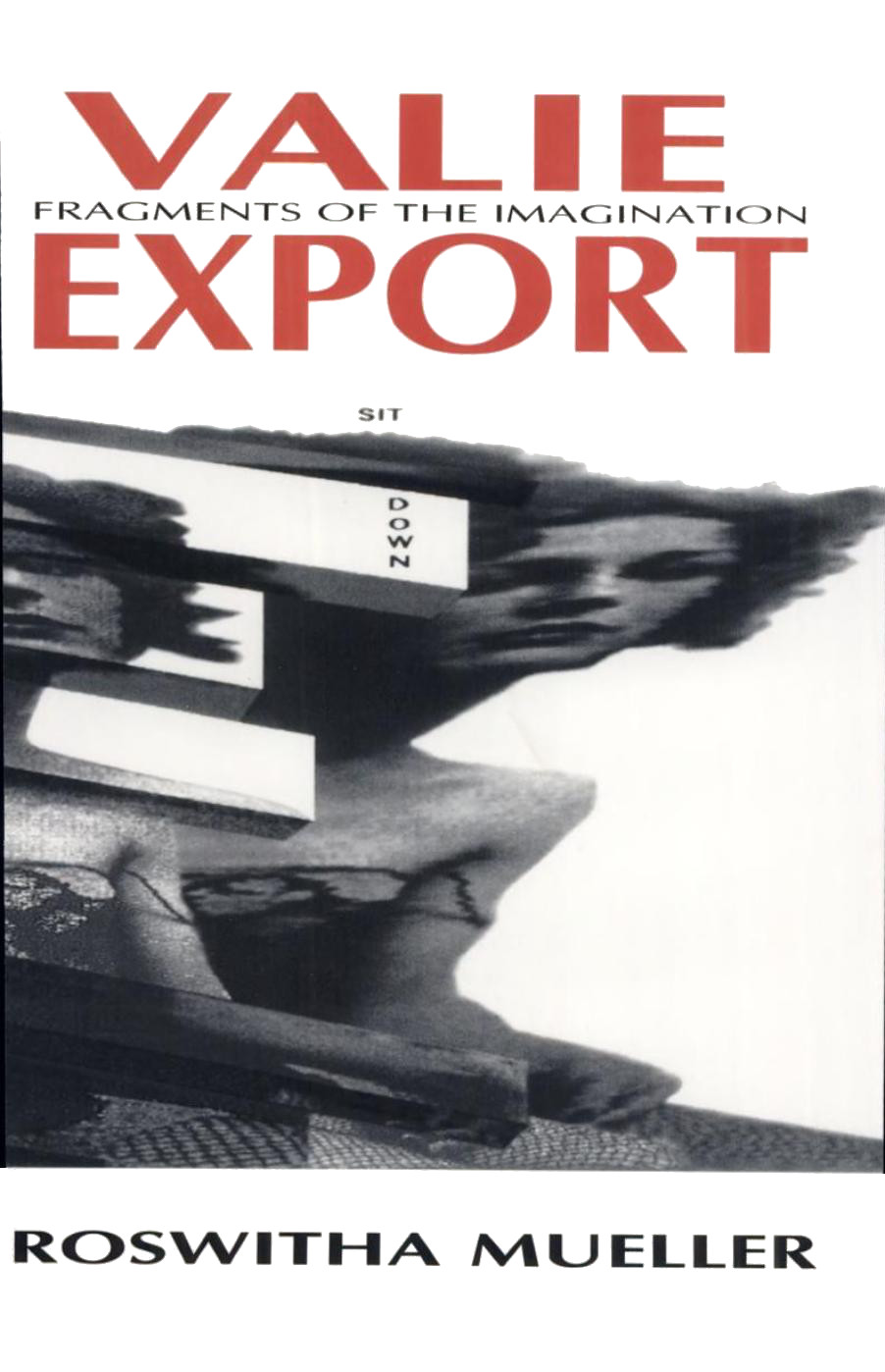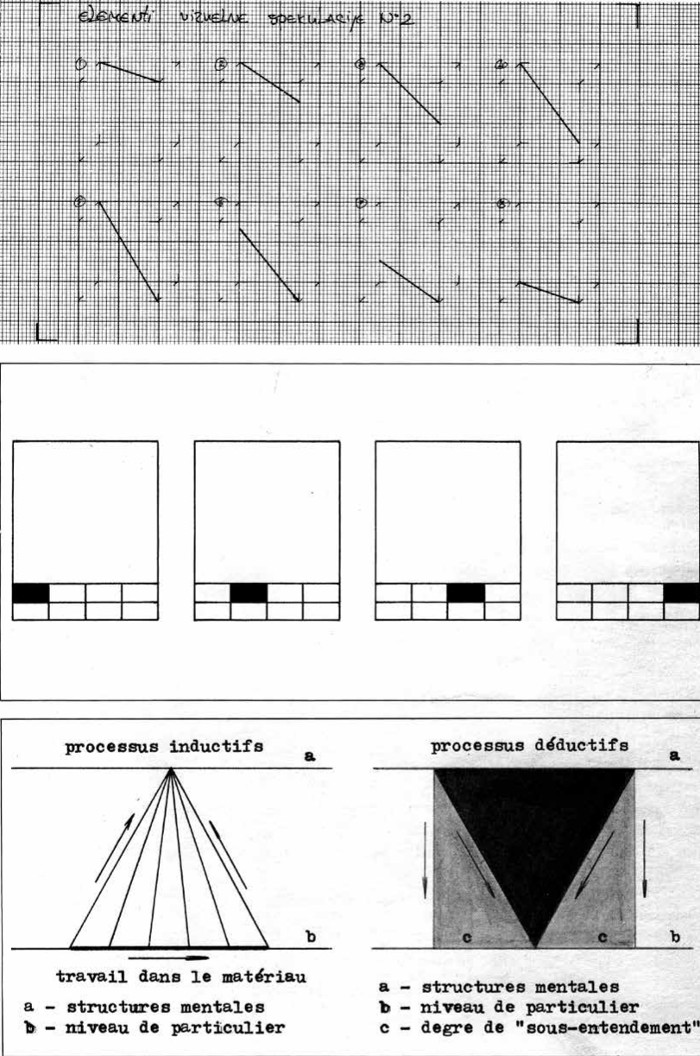Roswitha Mueller: Valie Export: Fragments of the Imagination (1994)
Filed under book | Tags: · art, body, expanded cinema, experimental film, feminism, film, fluxus, performance, performance art, photography, video

An early, groundbreaking radical performance artist, Valie Export created a philosophy of “Feminist Actionism” and in multimedia performances used the female body to critique male spectatorship. Roswitha Mueller examines Export’s performance and installation work; her photography; her avant-garde film experiments and her four feature films; and her critical writings and interviews. Valie Export’s primary object of study is the female human body, and as a multimedia artist, she has merged the discourses of the avant-garde and of feminism to reappropriate women’s gestures, postures, images, and rights. This comprehensive and extensively illustrated study also includes an interview with Export.
Publisher Indiana University Press, 1994
Women Artists in Film series
ISBN 0253209250, 9780253209252
246 pages
Review: Alison Butler (Screen, 1996).
PDF (no OCR)
Comment (0)Karin Grace Oen: Admonition and the Academy: Installation, Video, and Performance Art in Reform Era China (2012)
Filed under thesis | Tags: · 1980s, 1990s, art, art history, china, installation art, performance art, video, video art

Wu Shanzhuan, The Big Characters, 1985. (source)
“China’s Reform Era (1978-present) has seen the reinvigoration of academic, and artistic practice, and a rapprochement between the Chinese Communist Party and the intellectual elite. At its beginnings in the early- to mid-1980s the new availability of foreign texts and media led to Culture Fever, a widespread phenomenon throughout the intellectual and artistic spheres characterized by enthusiasm for the philosophy, literature, and art of the West and pre-Communist China and the simultaneous uptake of discrete Western and Confucian philosophies. These discussions often addressed modernity and modernism in China, a crucial homology to early twentieth century Chinese negotiations in literature and the arts and the development of an amalgamated ‘Chinese modernism’ comprised of elements of both Confucian and Western philosophy and aesthetics.
As this dissertation argues, key early experimental works of the Reform Era by Zhang Peili, Wu Shanzhuan, and Zhang Huan reveal a proclivity for subtle and indirect admonitory messages about China’s socio-political climate – a contemporary inhabitation of the traditional elite scholar-artist and his obligation to criticize immoral or unjust policies or actions. This admonitory practice was built by artists educated in elite academies (specifically, the Central Academy of Fine Art in Beijing and the Zhejiang Academy of Fine Art in Hangzhou) yet utilized completely new and non-academic media. What this thesis terms as an ‘art of admonition’ utilized traditional tropes, including direct remonstrations of officials, withdrawal from official life in protest, and the concept of the ‘middle hermit’ – a scholar who admonishes official policy subtly and indirectly.
The experimental practices of artists after their graduation from elite academies stemmed from the extra-curricular resources made available to them, especially the schools’ libraries. The connection of these unofficial works to the official academies, their validation by art market success, and the subsequent official endorsement accorded to these and other artists in the later Reform Era blurs the distinctions between official and unofficial artistic practice in China, suggesting a strong endorsement of the dissident artist’s role as ‘middle hermit’.” (Abstract)
Thesis, Ph. D. in History, Theory, and Criticism of Art and Architecture
Dept. of Architecture, Massachusetts Institute of Technology, 2012
Supervisor: Caroline A. Jones
214 pages
PDF, PDF (13 MB, updated on 2017-1-11)
Comment (0)Dietmar Unterkofler: Grupa 143: Critical Thinking at the Borders of Conceptual Art, 1975–1980 (2012) [Serbian/English]
Filed under book | Tags: · 1970s, art, art history, conceptual art, film, performance art, photography, serbia, yugoslavia

The late-conceptualist art collective Group 143 was founded in March 1975 by Biljana Tomić in Belgrade as an open educational and theoretical platform at the Student Cultural Centre. Besides Tomić, the other key figures in the group were Miško Šuvaković, Jovan Čekić, Paja Stanković, Neša Paripović, and Maja Savić. The group worked together for five years, producing a broad range of artistic work in the media of photography, film, the artist’s book, diagrams and charts, public lectures, and performance art. Their research was focused primarily on epistemological and theoretical questions about the “art world” in general and the critical potential of intellectualized art-thinking within the conditions of late socialism in Yugoslavia.
The theoretical foundation of their art was shaped by structuralist and post-structuralist French theory, language philosophy, post-constructivism, and British and American conceptual art. Their last public presentation of their work came in August 1980, when Group 143 had a solo exhibition at Galerija Loža in Koper. (Source)
Grupa 143: kritičko mišljenje na granicama konceptualne umetnosti 1975-1980
Publisher Glasnik, Belgrade, 2012
ISBN 9788651915539
393 pages

